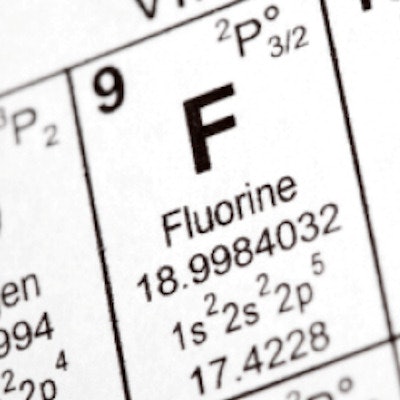
Ending community water fluoridation (CWF) may have long-lasting oral health and financial consequences. Researchers found the number of caries treatments and their associated Medicaid costs soared after officials in Juneau, AK, opted to stop adding fluoride to the city's water supply.
The effect on caries incidence and treatment costs were most pronounced for the city's youngest children, who grew up without ever having access to optimally fluoridated tap water. The study authors suggested their findings might shed light on the costs associated with stopping community water fluoridation (BMC Oral Health, December 13, 2018).
"Overall, the costs of caries treatment services increased for each age group cohort, even after adjusting for inflation, and were markedly higher under suboptimal CWF conditions," wrote the authors, led by Jennifer Meyer, PhD, MPH, RN, an assistant professor at the University of Alaska Anchorage. "These results support current evidence that even in modern conditions with widely available fluoride toothpaste, rinses, and professionally applied prophylaxis, CWF is associated with population benefits, including cost-effectiveness and caries prevention."
Big differences before and after fluoridation
In the 20th century, many U.S. communities began to fluoridate their water supply as a way to help prevent dental caries and to remineralize teeth. However, several cities recently have elected to stop adding fluoride to public water systems, leading researchers to question the oral health and financial implications of this decision.
“CWF is associated with population benefits, including cost-effectiveness and caries prevention.”
Meyer and colleagues decided to look at how these two factors changed for Medicaid-eligible children in Juneau, AK, after the city stopped community water fluoridation in 2007. The researchers specifically chose Juneau because the city is accessible only by boat or plane, making it less likely that children would be exposed to fluoridated water by traveling to neighboring cities. Additionally, Medicaid-eligible children were more likely to be affected by the decision to end fluoridation and have relatively similar demographics before and after fluoridation ended.
The study included nearly 2,000 Medicaid-eligible children up to age 18. The researchers used caries-related dental Medicaid claims from 2003 and 2012 for their analysis.
The number of caries-related dental procedures was significantly higher after Juneau stopped water fluoridation, the researchers found. In 2003, there was an average of 2.02 caries procedures per Medicaid-eligible child, and that number rose to 2.35 in 2012.

The odds that a child would need caries treatment also rose significantly between 2003 and 2012, as did the cost for that treatment. The average caries treatment cost was $593.70 in 2012, up from $344.34 in 2003. Even after adjusting for inflation, treatment costs rose by almost 50% after water fluoridation ended, the researchers noted.
The rise in the number of caries-related dental procedures and treatment costs was especially substantial for children younger than 6, a cohort who never experienced community water fluoridation in Juneau. In 2012, there were 2.52 caries procedures per Medicaid-eligible child under 6 years, up from 1.55 procedures in 2003. The cost of treatment also increased to $644.72 in 2012 from $272.73 in 2003.
"In this study, a major advantage of acquiring both pre- and postfluoride cessation data in this natural setting was the potential to assess the net differences in the intervention condition and in the control condition," the authors wrote. "The results indicate a clear caries epidemiologic shift toward a caries increase among patients without the protective benefit of optimal CWF."
Weighing the cost of cutting fluoride
The researchers noted a number of shortcomings with their study. Notably, they did not include claims for extractions or full-mouth restorations in their analysis because they could not confirm whether those procedures were caries-related without the children's medical records. Thus, the number of caries procedures and costs may be underreported.
The researchers also did not take into account confounding variables, such as changes in dietary habits, parental education, or the use of fluoridated toothpaste. They had hoped to attain more than two years of data, but could not because of funding restrictions (the study was self-funded, according to the authors).
Finally, the study focused on a very specific population and income level. Although this reduces the likelihood of interference from confounding variables, it also means the findings may not be applicable to other cities or even other income brackets in Juneau. Nevertheless, it demonstrates the importance for policymakers to consider the potential oral health and financial implications of discontinuing fluoridation, the authors noted.
"The analysis also can offer fiscal estimates that can be used by community leaders and decision-makers who are considering CWF cessation and may need to plan for the increased revenue required to address the treatment costs among clients relying on state and federal government subsidies," the authors wrote. "With this study, dental and public health professionals also have access to more evidence to accurately inform officials establishing future community water fluoridation policies and to illustrate how CWF cessation can affect individuals, especially children, in economically vulnerable or low-income circumstances."



















